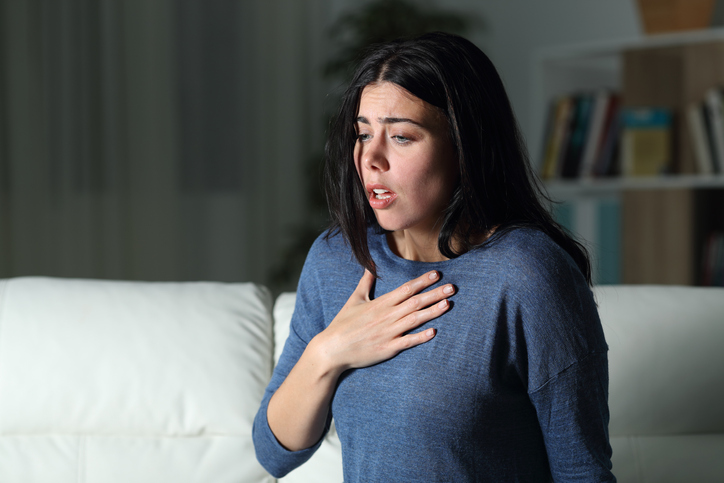Signs and symptoms
Common anxiety signs and symptoms include the following:
- Nervousness
- Restlessness
- Physical tension
- A sense of impending danger, panic, or doom
- Increased heart rate
- Rapid breathing (hyperventilation)
- Sweating
- Trembling
- Physical weakness
- Tiredness
- Trouble concentrating
- Trouble thinking about anything other than the present fear or concern
- Difficulty sleeping, either falling or staying asleep
- Upset stomach
- Loss of appetite

Types
Several types of anxiety disorders exist:
- Agoraphobia (uh·gaw·ruh·fow·bee·uh) is the fear and avoidance of places or situations that might cause you to panic and make you feel trapped, helpless, or embarrassed.
- Anxiety disorder due to a medical condition includes symptoms of intense anxiety or panic that are directly caused by a physical health problem.
- Generalized anxiety disorder includes persistent and excessive anxiety and worry about activities or events—even ordinary, routine issues. The worry is out of proportion to the actual circumstance, is difficult to control, and affects how you feel physically. It often occurs along with other anxiety disorders or depression.
- Panic disorder involves repeated episodes of sudden feelings of intense anxiety and fear or terror that reach a peak within minutes (panic attacks). You may have feelings of impending doom, shortness of breath, chest pain, or a rapidly fluttering or pounding heart (palpitations). These panic attacks may lead to worrying about them happening again or avoiding situations in which they've occurred.
- Selective mutism is a childhood disorder marked by consistent failure to speak in certain situations, such as school, even when they can speak in other situations, such as at home with close family members. This can interfere with school, work, and social functioning.
- Separation anxiety disorder is a childhood disorder characterized by excessive anxiety related to separation from parents or those in parental roles.
- Social anxiety disorder (social phobia) involves high levels of anxiety, fear, and avoidance of social situations due to feelings of embarrassment, self-consciousness, and concern about being judged or viewed negatively by others.
- Specific phobias are characterized by major anxiety when you’re exposed to a specific object or situation and a desire to avoid it. Phobias provoke panic attacks in some people.
- Substance-induced anxiety disorder is characterized by intense anxiety or panic directly resulting from misusing drugs, taking medications, being exposed to a toxic substance, or withdrawal from drugs.
- Other specified anxiety disorder and unspecified anxiety disorder are anxiety or phobias that don't meet the exact criteria for any other anxiety disorders but are significant enough to be distressing and disruptive.
When to see a doctor
See your doctor if any of the following occurs:
- Your worrying interferes with your work, school, relationships, or other parts of your life.
- Your fear, worry, or anxiety seems to be in control of your life.
- Your anxiety symptoms last more than two weeks, consistently throughout the day, or all day or night.
- You feel depressed, have trouble with alcohol or drug use, or have other mental health concerns along with anxiety.
- You think your anxiety could be linked to a physical health struggle.
- You have suicidal thoughts or behaviors—in this case, seek emergency treatment immediately at an emergency department or by scheduling an appointment with a licensed medical or mental health professional.
Your worries may not go away on their own and may even get worse over time without professional help. Anxiety can be treated and managed with early intervention.
